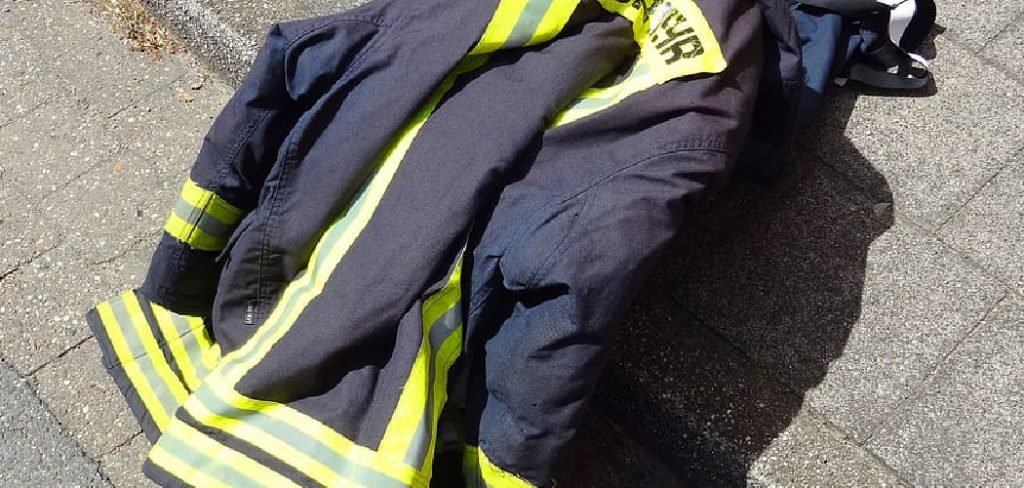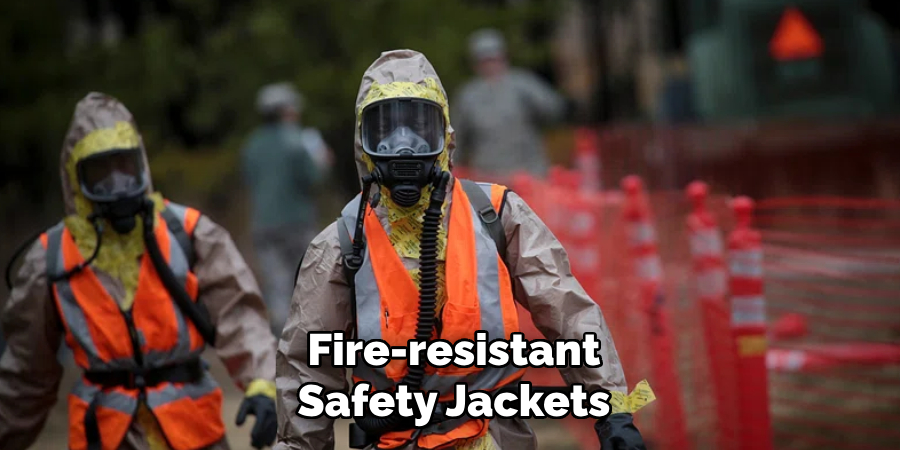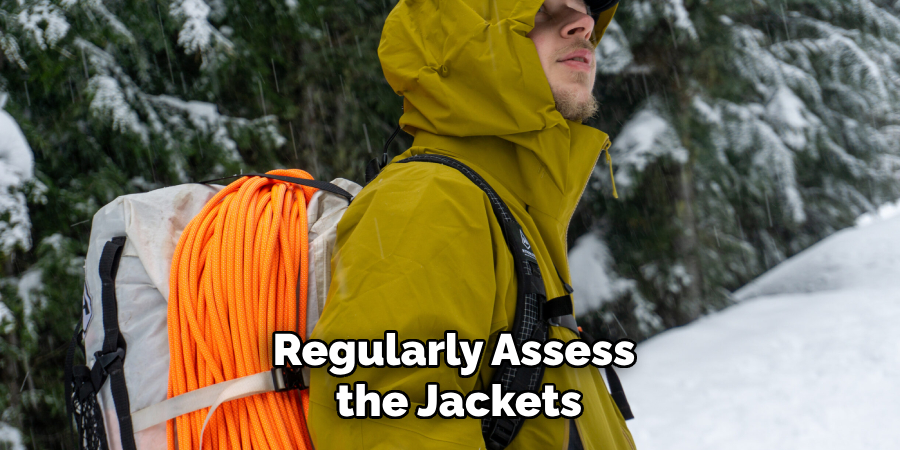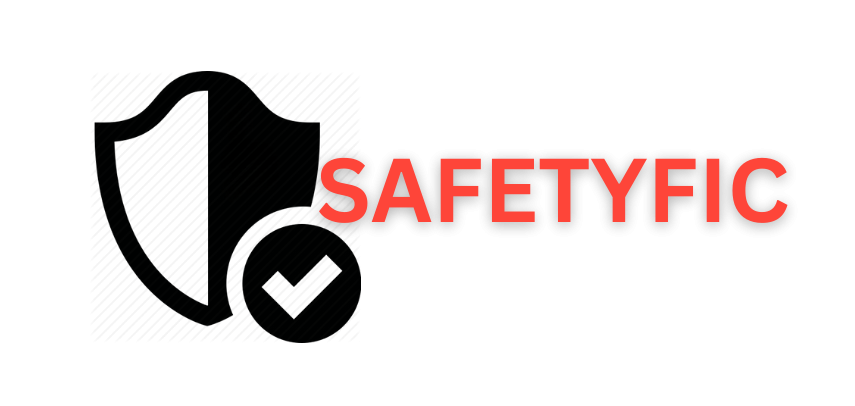When working in hazardous environments, safety should always be a top priority. Fire-resistant safety jackets are designed to provide critical protection against heat and flame, reducing the risk of burns while ensuring comfort and durability. Choosing the right safety jacket can make a significant difference not only in personal safety but also in overall work efficiency.

This guide will help you understand how to select a fire-resistant safety jacket, ensuring you find the best option for your specific needs.
What Makes a Safety Jacket Fire-Resistant?
The fire-resistant qualities of a safety jacket come from the specialized materials and construction methods used in its design. These jackets are often made from fabrics like aramids, modacrylics, or treated cotton, which inherently resist ignition and limit the spread of flames. Fire-resistant coatings or treatments may also be applied to enhance their protective properties.
Additionally, the durability of these materials ensures that the jacket maintains its resilience even after repeated exposures to heat or rigorous use. Proper stitching with fire-resistant thread and reinforced seams further contribute to the jacket’s protective capabilities. By combining these features, fire-resistant safety jackets offer vital defense against high-temperature environments, making them essential for individuals working in industries such as firefighting, electrical work, and industrial manufacturing.
Importance of Fire-Resistant Safety Jackets
Fire-resistant safety jackets are essential for individuals working in industries where exposure to heat, fire, or electrical hazards is a constant risk. These jackets are specifically designed to minimize injury by resisting ignition and reducing the spread of flames. By providing an additional layer of protection, they can significantly lower the severity of burn injuries and offer workers critical seconds to react in dangerous situations.
Beyond personal safety, fire-resistant jackets also comply with workplace safety regulations, ensuring employers adhere to industry standards and create a safer work environment. Investing in quality safety gear can save lives, prevent long-term injuries, and foster a culture of safety in high-risk workplaces.

10 Methods How to Select a Fire-Resistant Safety Jacket
1. Understand Fire-Resistant Materials
The foundation of a fire-resistant safety jacket is the material it’s made from. Common fire-resistant materials include Nomex, Kevlar, and modacrylic blends. These fabrics are inherently fire-resistant and maintain their protective properties even after multiple washes. Evaluate the material’s durability, breathability, and resistance to wear and tear to ensure long-lasting performance.
2. Check Certification Standards
Fire-resistant safety jackets must adhere to specific safety standards to guarantee their effectiveness. Look for certifications such as NFPA 2112 (Standard on Flame-Resistant Clothing for Protection of Industrial Personnel) or ASTM standards. These certifications indicate that the jacket has undergone rigorous testing for flame resistance, heat protection, and durability.
3. Assess Thermal Protection Performance (TPP)
Thermal Protection Performance (TPP) is a critical factor in fire-resistant clothing. It measures the garment’s ability to protect against heat and flames. A higher TPP rating indicates better protection. Choose a jacket with a TPP rating appropriate for your work environment, ensuring it provides adequate insulation against heat exposure.
4. Evaluate Fit and Comfort
A safety jacket must fit well to offer maximum protection and mobility. Ensure the jacket allows for freedom of movement without being too loose or tight. Look for features like adjustable cuffs, elastic waistbands, and articulated sleeves that enhance comfort. A comfortable jacket encourages compliance and reduces fatigue during extended wear.
5. Consider Multi-Hazard Protection
In some work environments, fire resistance alone may not be sufficient. Look for jackets that offer multi-hazard protection, such as resistance to chemical splashes, electrical arcs, or weather conditions. Jackets with multiple protective features provide a versatile solution for workers exposed to various risks.
6. Inspect Reflective Strips and High-Visibility Features
High-visibility features like reflective strips are essential for workers in low-light or high-traffic environments. Ensure the jacket’s reflective materials meet ANSI/ISEA standards for visibility. These features enhance safety by making the wearer more noticeable to others, especially in emergency situations.
7. Examine Closure Systems
The closure system of a fire-resistant jacket plays a crucial role in maintaining its protective properties. Look for flame-resistant zippers, Velcro closures, or snap buttons that prevent heat penetration. Ensure the closures are easy to operate and securely fasten the jacket, even in challenging conditions.
8. Check for Layering Compatibility
In colder climates, layering is essential for warmth. Select a fire-resistant jacket that accommodates layering without compromising safety. Look for designs with enough room to wear thermal or insulating layers underneath while maintaining a snug fit. Jackets with removable liners offer flexibility for varying temperatures.

9. Evaluate Maintenance and Care Requirements
Fire-resistant jackets require proper maintenance to retain their protective properties. Review the manufacturer’s care instructions, including washing and drying guidelines. Some jackets are machine-washable, while others may require specialized cleaning. Opt for a jacket that aligns with your maintenance capabilities to ensure long-term effectiveness.
10. Consider Cost vs. Quality
While budget considerations are important, prioritize quality and safety over cost. A higher-priced jacket with superior materials, certifications, and features often provides better protection and durability. Investing in a high-quality fire-resistant jacket can reduce replacement costs and enhance safety in the long run.
Things to Consider When Choosing Fire-Resistant Safety Jackets
When selecting fire-resistant safety jackets, there are several crucial factors to keep in mind to ensure optimal safety, comfort, and durability.
Work Environment
Analyze the specific hazards present in your workplace. Fire-resistant jackets should be tailored to the type of risks, whether it’s flame exposure, electrical arcs, or chemical hazards. Selecting a jacket that meets the unique demands of your job ensures comprehensive protection.
Duration of Use
Consider how frequently and for how long the jacket will be used. Workers requiring prolonged use may need jackets with enhanced breathability and lightweight materials to prevent heat exhaustion while maintaining safety standards.
Weather Conditions
Weather plays a vital role in choosing a safety jacket. For cold environments, opt for jackets with built-in insulation or compatibility with thermal layers. For hot or humid conditions, prioritize lightweight, breathable materials to enhance comfort without compromising fire resistance.
Ease of Movement
Jobs that demand physical activity require jackets designed for flexibility and mobility. Features like gusseted underarms, bi-swing backs, and articulated sleeves ensure the jacket moves with the wearer while maintaining its protective performance.
Longevity and Durability
Investing in a high-quality jacket that can endure harsh working conditions and multiple wash cycles is essential. Durable materials and reinforced seams extend the lifespan of the jacket, reducing replacement expenses over time.

Maintenance and Upkeep
Proper maintenance and upkeep are essential to ensure the continued effectiveness and longevity of fire-resistant safety jackets. Here are some key guidelines to follow:
Follow Manufacturer’s Instructions
Always adhere to the care instructions provided by the manufacturer. These guidelines are specific to the materials and construction of the jacket and are designed to preserve its fire-resistant properties.
Regular Inspection
Conduct routine inspections of the jacket for signs of wear and tear, such as fraying, fading, or damage to reflective strips. Replace the jacket immediately if its integrity is compromised, as damaged jackets can reduce protection against hazards.
Cleaning Practices
Use only recommended cleaning methods and detergents, as harsh chemicals or improper washing can degrade the jacket’s protective coating. Avoid bleach or fabric softeners, which can weaken fire-resistant properties. Machine-washable jackets should be cleaned on gentle cycles, while some may require professional laundering.
Drying Guidelines
Air drying is generally the safest method to maintain the jacket’s fire-resistant qualities. If tumble drying is allowed, use a low heat setting as excessive heat can damage the fabric. Avoid direct sunlight or high heat when drying.
Storage Conditions
Store fire-resistant jackets in a clean, dry, and cool environment away from direct sunlight or sources of heat. Hanging them on padded hangers or storing them flat can help retain their shape and prevent damage.
Avoid Contamination
Prevent exposure to oils, greases, or other flammable substances that can compromise the fire-resistant properties. If contamination occurs, clean the jacket immediately to restore its protective function.
Periodic Replacement
Fire-resistant jackets have a finite lifespan, even with proper care. Regularly assess the jacket’s condition and replace it as recommended by the manufacturer or when its protective qualities begin to decline.
By following these maintenance and upkeep practices, you can maximize the performance, durability, and safety of your fire-resistant jacket, ensuring reliable protection in hazardous work environments.

Conclusion
Selecting a fire-resistant safety jacket requires careful consideration of materials, certifications, features, and fit. By following these ten methods, you can make an informed decision that ensures maximum protection, comfort, and durability. Thanks for reading, and we hope this has given you some inspiration on how to select a fire-resistant safety jacket!
About
Safety Fic is a distinguished figure in the world of Diy design, with a decade of expertise creating innovative and sustainable Diy solutions. His professional focus lies in merging traditional craftsmanship with modern manufacturing techniques, fostering designs that are both practical and environmentally conscious. As the author of diy, Safety Fic delves into the art and science of Safety Fic-making, inspiring artisans and industry professionals alike.
Education RMIT University
(Melbourne, Australia) Associate Degree in Design (Safety Fic) Focus on sustainable design, industry-driven projects, and practical craftsmanship. Gained hands-on experience with traditional and digital manufacturing tools, such as CAD and CNC software.
Nottingham Trent University
(United Kingdom) Bachelor’s in diyfastly.com and Product Design (Honors) Specialized in product design with a focus on blending creativity with production techniques. Participated in industry projects, working with companies like John Lewis and Vitsoe to gain real-world insights.
Publications and Impact
In diy, Safety Fic his insights on indoor design processes, materials, and strategies for efficient production. His writing bridges the gap between artisan knowledge and modern industry needs, making it a must-read for both budding designers and seasoned professionals.
